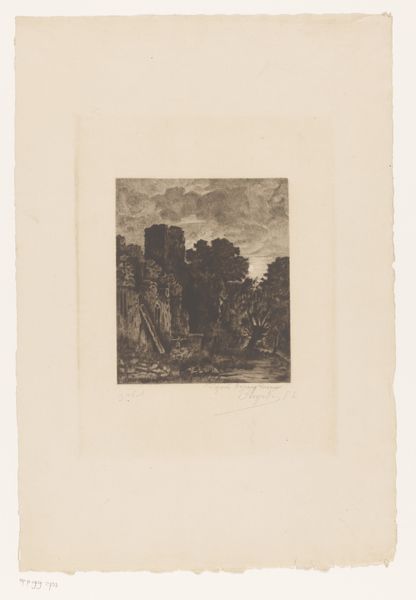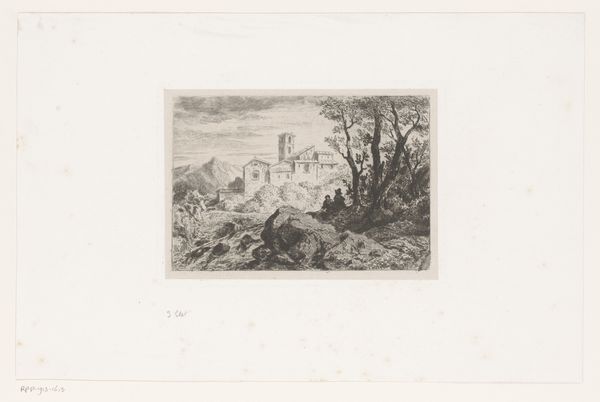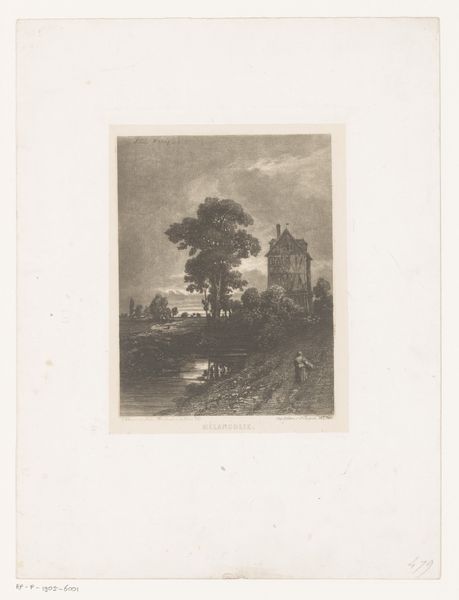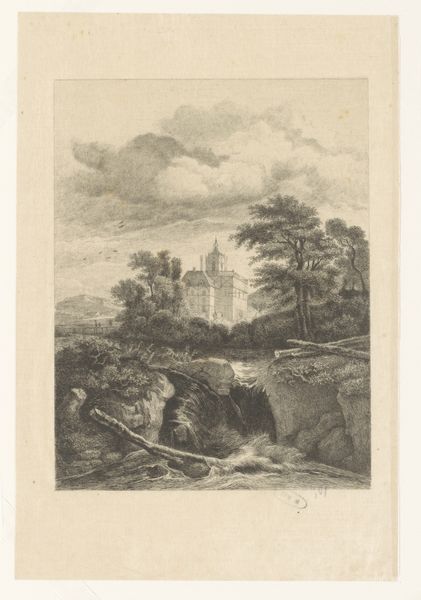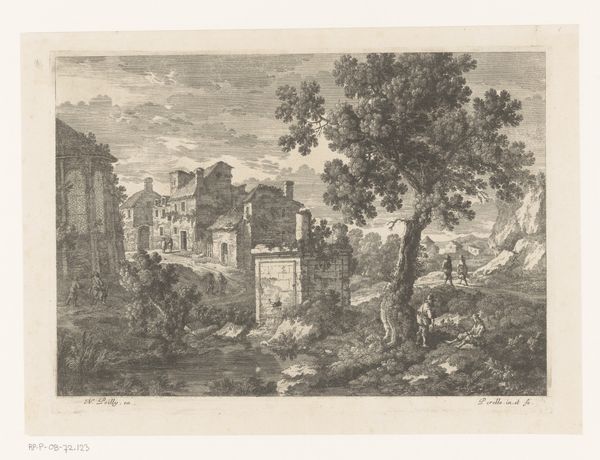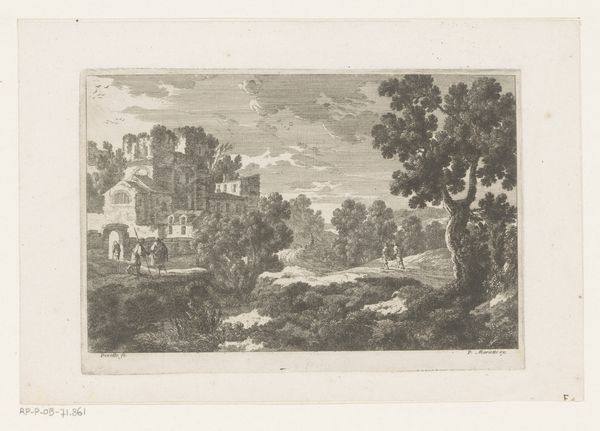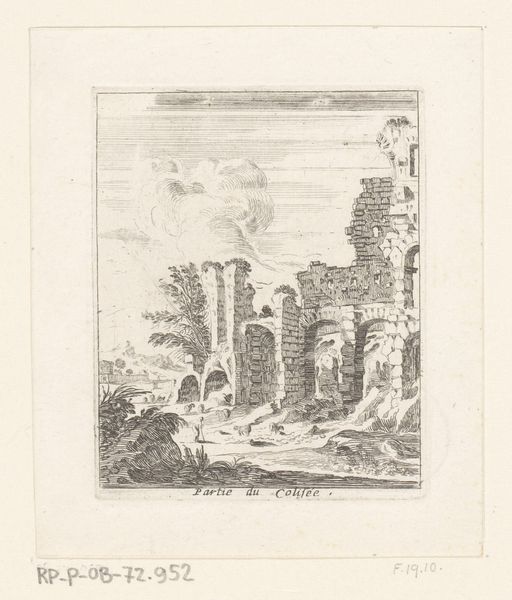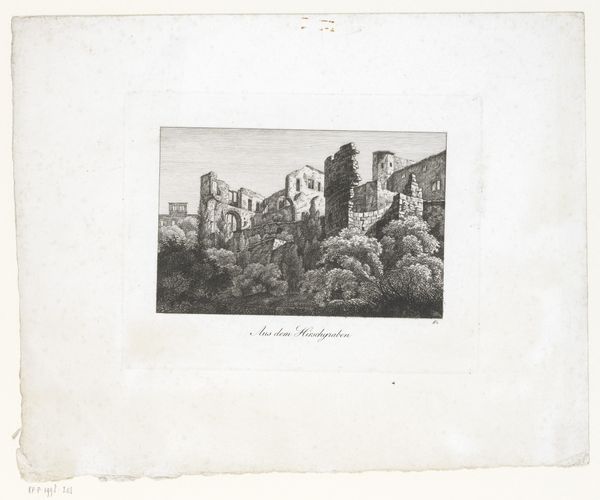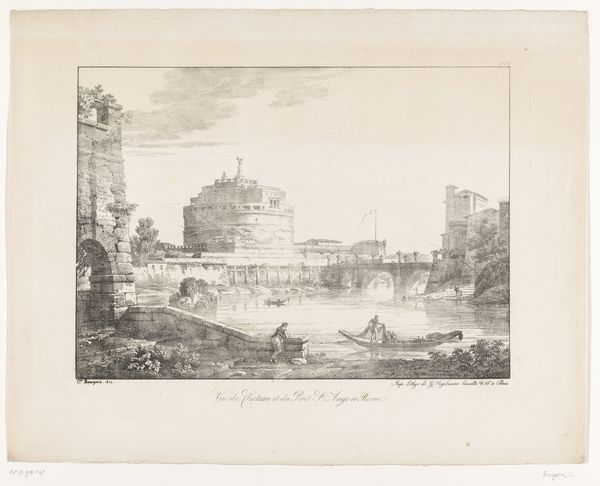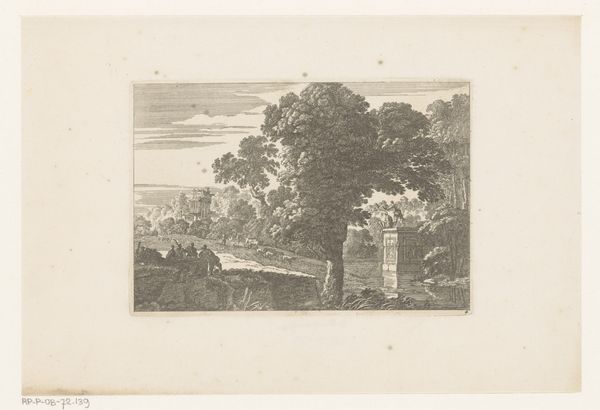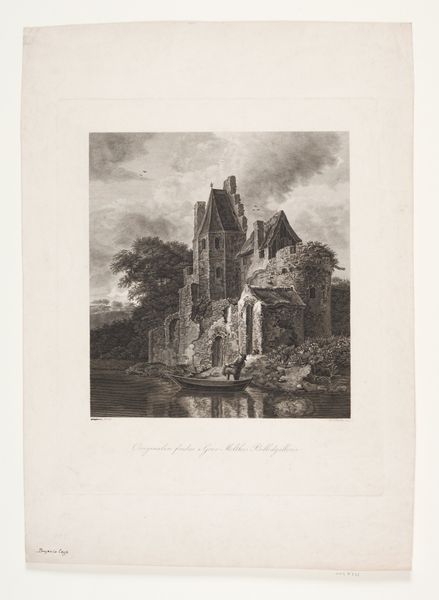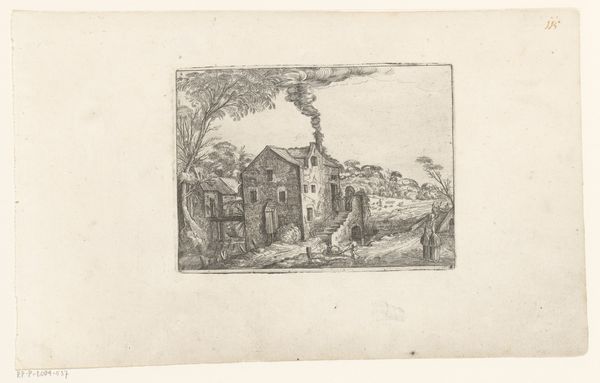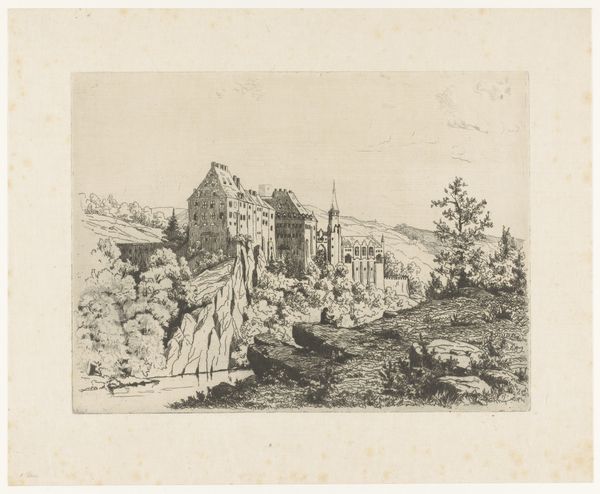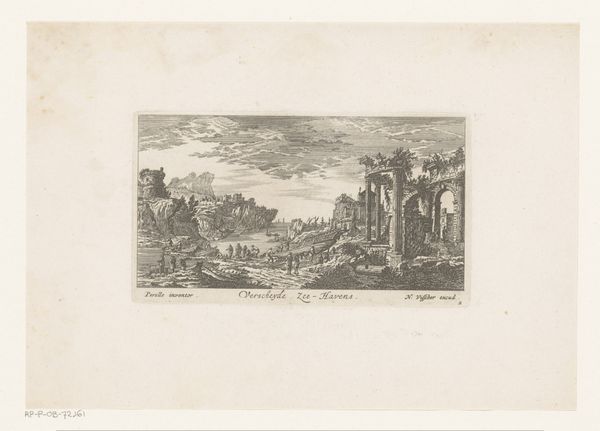
carving, print, etching
#
medieval
#
carving
# print
#
etching
#
landscape
#
history-painting
Dimensions: height 241 mm, width 327 mm
Copyright: Rijks Museum: Open Domain
Editor: This is Florimond Buyck's "Landschap met kasteelruïne," an etching created before 1909. The mood is definitely somber; the castle seems to be overtaken by nature. How do you interpret this work based on its formal elements? Curator: Let us observe. Note the linear quality achieved through the etching technique. The artist masterfully uses line variation, denser hatching creating darker values in the ruins and trees, thus creating spatial depth. The composition is structured to direct the gaze from the intricate details in the foreground toward the simplified landscape in the background, which lacks any distinct textural feature. Editor: I see how the artist leads our eyes through the ruin and out to the distance. It’s like a journey, but also very flat. I wonder, does that flatness diminish the artwork? Curator: On the contrary, it contributes to its structure. This flatness emphasizes the two-dimensionality of the print, a key attribute in Modernist aesthetics, yet remains representational with the ruined landscape. Is there an irreconcilable structural dichotomy between the ruined monument and the flat landscape? Editor: I think I’m starting to understand how form and representation can conflict in this print and yet enhance the meaning and aesthetic qualities of the image. Curator: Exactly. It also allows the artwork to have different points of entry. Do you notice how this tension impacts your experience with the piece? Editor: It makes me look for these conflicts to try to reconcile them. Thank you. Curator: It encourages contemplation and highlights the artwork's self-awareness. The exercise revealed interesting tensions within the work.
Comments
No comments
Be the first to comment and join the conversation on the ultimate creative platform.
